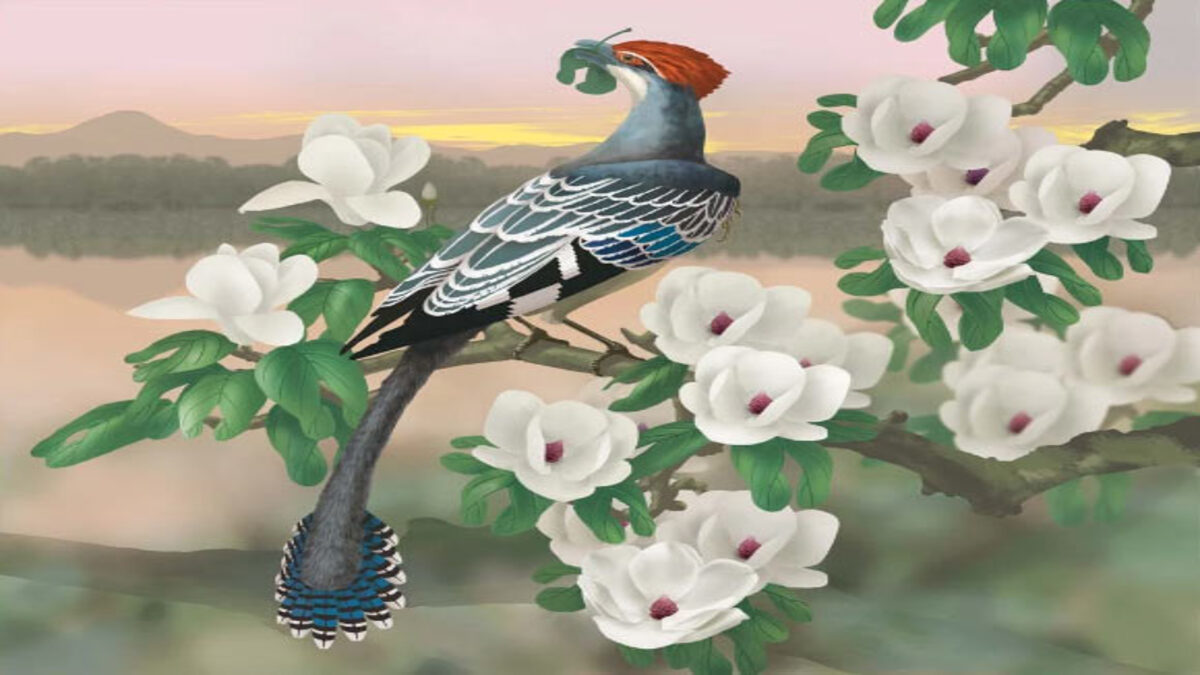Fossil plant phytoliths from the digestive tract of Jeholornis prima – an extinct species of bird that lived in what is now China during the Early Cretaceous Epoch about 120 million years ago – provide direct evidence that this early bird consumed leaves from a group of flowering plants called magnoliids.
Jeholornis’ extensive diet which included fruits and leaves. “ Plant phytoliths are composed of opaline silica (silicon dioxide) deposited within and between cells formed by monosillicic acid introduced into plants through water absorptionsaid senior author Dr. Zhiheng Li of the Institute of Vertebrate Paleontology and Paleoanthropology at the Chinese Academy of Sciences and colleagues. “Phytoliths have a long fossil record near the Paleozoic origin of plants, are resistant to dissolution, and are of particular use in paleontological and archaeological disciplines because of their highly diagnostic utility in plant taxonomy. In addition to their archaeological use, phytoliths have been used to reconstruct the diet of dinosaurs through the analysis of their feces and dentition residues, providing direct evidence of dinosaur-plant interactions“. In the study, paleontologists examined the fossilized skeleton of a Jeholornis found near the city of Chaoyang in northeastern China’s western Liaoning province. “Fossils from the Jehol Biota in China show us that very early in the evolution of birds they switched from predatory behavior to using their wings to fly to trees so they could eat the fruits, seeds and leaves of plants as many species do Today, “ Dr. Li said.
“To better understand the diets of early birds, we searched for microscopic fossilized plant remains within the remnants of ancient stomach contents within bird skeletons, a method never attempted before.. AWe aimed to find phytoliths, which are microscopic rigid structures made of opaline silica produced by plants within and between their cells.”. Researchers have recovered hundreds of phytoliths after processing the tiny samples with acid and other chemicals. “After comparison with more than 4,000 types of modern phytoliths, we can see that most of the identifiable fossil stomach phytoliths come from the leaves of magnoliids”said first author Dr. Yan Wu, also of the Institute of Vertebrate Paleontology and Paleoanthropology at the Chinese Academy of Sciences and colleagues. “Similar samples of the rock surrounding the bird’s fossil skeleton yielded no phytolith residues, helping to confirm that the recovered phytoliths represent part of the bird’s diet.” To further support their leaf-eating hypothesis in Jeholornis prima, the scientists compared this bird’s lower jaw to that of live birds with a wide range of diets. “A more detailed statistical analysis of the three-dimensional shape of the lower jaw of Jeholornis prima shows similarities to the shapes of living birds that feed primarily on plants, including the living leaf specialist, the hoatzin of tropical forests of South America,” said co-author Dr. Han Hu, a paleontologist at the University of Oxford. “Flowering plants are vital to experiencing bird diversity because many use nectar and various plant parts to fuel their energetic flight and rapid growth, and many of the bright feather colors come from the plants they eat.. As we can see with this extinct tree-dwelling bird, the evolution of birds has been linked to flowering plants for over 100 million years with fruits, seeds and even leaves serving as main courses on the bird menu originally starting when the birds still had the teeth and long, bony tails of dinosaurs,” said co-author Dr. Thomas Stidham, a paleontologist at the Institute of Vertebrate Paleontology and Paleoanthropology at the Chinese Academy of Sciences.
